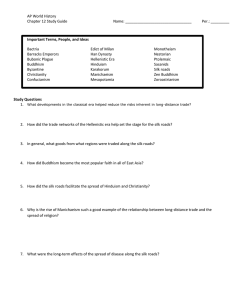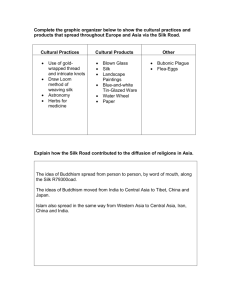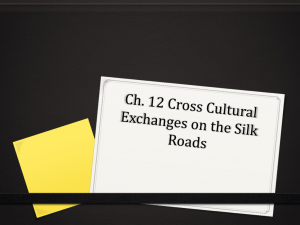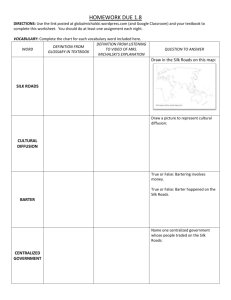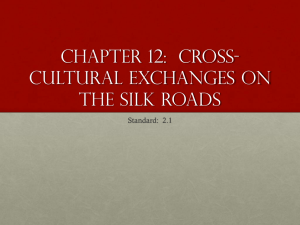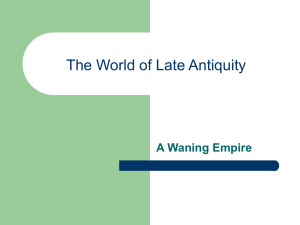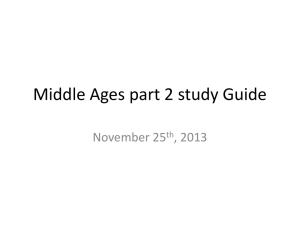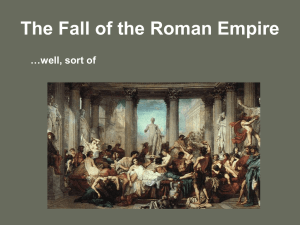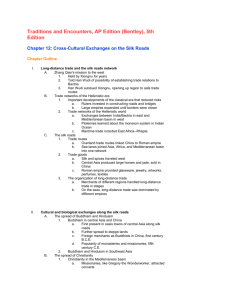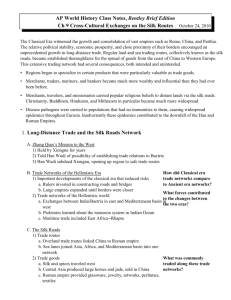Ch. 12 Reading Questions
advertisement
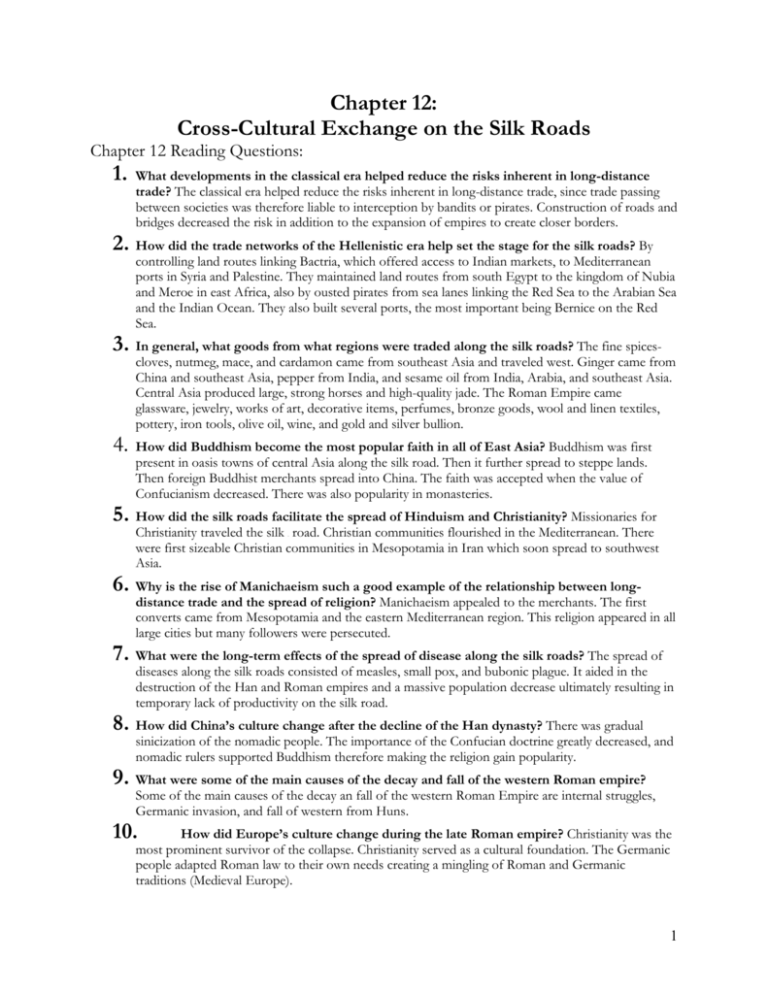
Chapter 12: Cross-Cultural Exchange on the Silk Roads Chapter 12 Reading Questions: 1. What developments in the classical era helped reduce the risks inherent in long-distance trade? The classical era helped reduce the risks inherent in long-distance trade, since trade passing between societies was therefore liable to interception by bandits or pirates. Construction of roads and bridges decreased the risk in addition to the expansion of empires to create closer borders. 2. How did the trade networks of the Hellenistic era help set the stage for the silk roads? By controlling land routes linking Bactria, which offered access to Indian markets, to Mediterranean ports in Syria and Palestine. They maintained land routes from south Egypt to the kingdom of Nubia and Meroe in east Africa, also by ousted pirates from sea lanes linking the Red Sea to the Arabian Sea and the Indian Ocean. They also built several ports, the most important being Bernice on the Red Sea. 3. In general, what goods from what regions were traded along the silk roads? The fine spices- cloves, nutmeg, mace, and cardamon came from southeast Asia and traveled west. Ginger came from China and southeast Asia, pepper from India, and sesame oil from India, Arabia, and southeast Asia. Central Asia produced large, strong horses and high-quality jade. The Roman Empire came glassware, jewelry, works of art, decorative items, perfumes, bronze goods, wool and linen textiles, pottery, iron tools, olive oil, wine, and gold and silver bullion. 4. How did Buddhism become the most popular faith in all of East Asia? Buddhism was first present in oasis towns of central Asia along the silk road. Then it further spread to steppe lands. Then foreign Buddhist merchants spread into China. The faith was accepted when the value of Confucianism decreased. There was also popularity in monasteries. 5. How did the silk roads facilitate the spread of Hinduism and Christianity? Missionaries for Christianity traveled the silk road. Christian communities flourished in the Mediterranean. There were first sizeable Christian communities in Mesopotamia in Iran which soon spread to southwest Asia. kit 6. Why is the rise of Manichaeism such a good example of the relationship between long- distance trade and the spread of religion? Manichaeism appealed to the merchants. The first converts came from Mesopotamia and the eastern Mediterranean region. This religion appeared in all large cities but many followers were persecuted. 7. What were the long-term effects of the spread of disease along the silk roads? The spread of diseases along the silk roads consisted of measles, small pox, and bubonic plague. It aided in the destruction of the Han and Roman empires and a massive population decrease ultimately resulting in temporary lack of productivity on the silk road. 8. How did China’s culture change after the decline of the Han dynasty? There was gradual sinicization of the nomadic people. The importance of the Confucian doctrine greatly decreased, and nomadic rulers supported Buddhism therefore making the religion gain popularity. 9. What were some of the main causes of the decay and fall of the western Roman empire? Some of the main causes of the decay an fall of the western Roman Empire are internal struggles, Germanic invasion, and fall of western from Huns. 10. How did Europe’s culture change during the late Roman empire? Christianity was the most prominent survivor of the collapse. Christianity served as a cultural foundation. The Germanic people adapted Roman law to their own needs creating a mingling of Roman and Germanic traditions (Medieval Europe). 1
